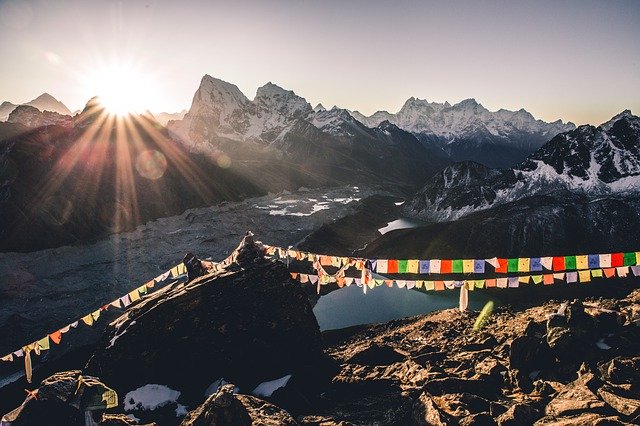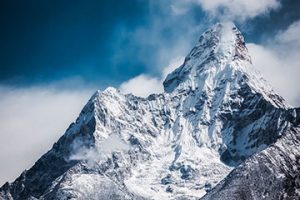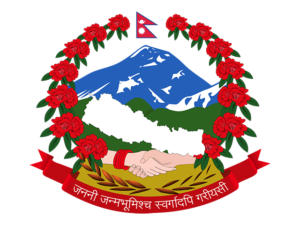Culture of Nepal

Society
Traditional Nepali society is sometimes defined by social hierarchy. The Nepali caste system embodies much of the social stratification and many of the social restrictions found in South Asia. Social classes are defined by more than a hundred endogamous hereditary groups, often termed as jātis, or “castes”. Nepal declared untouchability to be illegal in 1963 and has since enacted other anti-discriminatory laws and social welfare initiatives. At the workplace and educational institutions in urban Nepal, caste-related identification has pretty much lost its importance.
Family values are important in the Nepali tradition, and multi-generational patriarchal joint families have been the norm in Nepal, though nuclear families are becoming common in urban areas. An overwhelming majority of Nepalis, with or without their consent, have their marriages arranged by their parents or other family elders. Marriage is thought to be for life, and the divorce rate is extremely low, with less than one in a thousand marriages ending in divorce. Child marriages are common, especially in rural areas; many women wed before reaching 18.
Many Nepali festivals are religious in origin. The best known include: Dashain, Tihar, Teej, Chhath, Maghi, Sakela, Holi, Eid ul-Fitr, Christmas, and the Nepali new year.
Symbols
The emblem of Nepal depicts the snowy Himalayas, the forested hills, and the fertile Terai, supported by a wreath of rhododendrons, the national flag at the crest and in the foreground, a plain white map of Nepal with a man’s and woman’s right hands joining to signify gender equality just below it. At the bottom is the national motto of Nepal, a Sanskrit quote of patriotism attributed in Nepali folklore to Lord Rama, written in Devanagari script— ”Mother and the motherland are greater than heaven”.
Nepal’s flag is the only national flag in the world that is not rectangular in shape. The constitution contains instructions for a geometric construction of the double-pennant flag. According to its official description, the crimson in the flag stands for victory in war or courage and is also the color of the rhododendron. The flag’s blue border signifies the Nepali people’s desire for peace. The moon on the flag is a symbol of the peaceful and calm nature of Nepalis, while the sun represents the aggressiveness of Nepali warriors.
The president is a symbol of national unity. The martyrs are symbols of patriotism. Commanders of the Anglo-Nepalese war, Amar Singh Thapa, Bhakti Thapa, and Balbhadra Kunwar are considered war heroes. A special designation of “National Hero” has been conferred to 16 people from Nepal’s history for their exceptional contributions to the prestige of Nepal. Prithvi Narayan Shah, the founder of modern Nepal, is held in high regard and considered “Father of the Nation” by many.
Art and architecture
The oldest known examples of architecture in Nepal are stupas of early Buddhist constructions in and around Kapilvastu in south-western Nepal, and those constructed by Ashoka in the Kathmandu Valley c. 250 BCE. The characteristic architecture associated exclusively with Nepal was developed and refined by Newa artisans of the Kathmandu Valley starting no later than the Lichchhavi period. A Tang dynasty Chinese travel book, probably based on records from c. 650 CE, describes contemporary Nepali architecture, predominantly built with wood, as rich in artistry, as well as wood and metal sculpture. It describes a magnificent seven-storied pagoda in the middle of a palace, with copper-tiled roofs, its balustrade, grills, columns and beams set about with fine and precious stones, and four golden sculptures of Makaras in the four corners of the base spouting water from their mouths like a fountain, supplied by copper pipes connected to the runnels at the top of the tower. Later Chinese chronicles describe Nepal’s king’s palace as an immense structure with many roofs, suggesting that Chinese were not yet familiar with the pagoda architecture, which has now become one of the chief characteristic of Chinese architecture. A typical pagoda temple is built with wood, every piece of it finely carved with geometrical patterns or images of gods, goddesses, mythical beings and beasts. The roofs usually tiled with clay, and sometimes gold plated, diminish in proportion successively until the topmost roof is reached which is itself ensigned by a golden finial. The base is usually composed of rectangular terraces of finely carved stone; the entrance is usually guarded by stone sculptures of conventional figures. Bronze and copper craftsmanship observable in the sculpture of deities and beasts, decorations of doors and windows and the finials of buildings, as well as items of every day use is found to be of equal splendour. The most well-developed of Nepali painting traditions is the thanka or paubha painting tradition of Tibetan Buddhism, practised in Nepal by the Buddhist monks and Newar artisans. Changu Narayan Temple, built c. 4th century CE has probably the finest of Nepali woodcraft; the Kathmandu, Patan and Bhaktapur Durbar Squares are the culmination of Nepali art and architecture, showcasing Nepali wood, metal and stone craftsmanship refined over two millennia.
The “ankhijhyal” window, that allows for a one-way view of the outside world, is an example of unique Nepali woodcraft, found in building structures, domestic and public alike, ancient and modern. Many cultures paint the walls of their homes with regular patterns, figures of gods and beasts and religious symbols; others paint their walls plain, often with clay or chernozem contrasted with yellow soil or limestone. The roofs of religious as well as domestic structures project considerably, presumably to provide protection from the sun and the rain. The timber of domestic structures is finely carved as with their religious counterparts.
Clothing
The most widely worn traditional dress in Nepal, for both women and men, from ancient times until the advent of modern times, was draped. For women, it eventually took the form of a sari, a single long piece of cloth, famously six yards long, and of width spanning the lower body. The sari is tied around the waist and knotted at one end, wrapped around the lower body, and then over the shoulder. In its more modern form, it has been used to cover the head, and sometimes the face, as a veil, particularly in the Terai. It has been combined with an underskirt, or a petticoat, and tucked in the waistband for more secure fastening. It is worn with a blouse, or cholo, which serves as the primary upper-body garment, the sari’s end, passing over the shoulder, now serving to obscure the upper body’s contours, and to cover the midriff. Cholo-sari has become the attire of choice for formal occasions, official environs and festive gatherings. In its more traditional form, as part of traditional dresses and as worn in daily life while performing household chores or labor, it takes the form of a fariya or gunyu, usually shorter than a sari in length as well as breadth, and all of it wrapped around the lower body.
For men, a similar but shorter length of cloth, the dhoti, has served as a lower-body garment. It too is tied around the waist and wrapped. Among the Aryans, it is also wrapped once around each leg before being brought up through the legs to be tucked in at the back. Dhoti or its variants, usually worn over a langauti, constitute the lower-body garment in the traditional clothing of Tharus, Gurungs and Magars as well as the Madhesi people, among others. Other forms of traditional apparel that involve no stitching or tailoring are the Patukas (a length of cloth wrapped tightly over the waist by both sexes as a waistband, a part of most traditional Nepali costumes, usually with a Khukuri tucked into it when worn by men), scarves like Pachhyauras and majetros and shawls like the Newar Ga and Tibetan khata, Ghumtos (the wedding veils) and various kinds of turbans (scarves worn around the head as a part of a tradition, or to keep off the sun or the cold, called a Pheta, Pagri or Sirpau).
Until the beginning of the first millennium CE, the ordinary dress of people in South Asia was entirely unstitched. The arrival of the Kushans from Central Asia, circa 48 CE, popularized cut and sewn garments in the style of Central Asia. The simplest form of sewn clothing, Bhoto (a rudimentary vest), is the universal unisex clothing for children, and traditionally the only clothing children wear until they come of age and are given adult garb, sometimes in a ceremonial rite of passage, such as the gunyu-choli ceremony for Hindu girls. Men continue to wear bhoto through adulthood. The upper body garment for men is usually a vest such as the bhoto, or a shirt similar to the Kurta, such as Daura, a closed-necked double-breasted long shirt with five pleats and eight strings that serve to tie it around the body. Suruwal, simply translated as a pair of trousers, is an alternative to and, more recently, replacement for dhoti, kachhad (Magars) or Lungi (Tharus); it is traditionally much wider above the knees but tapers below, to fit tightly at the ankles, and is tied to the waist with a drawstring. Modern cholos worn with sarees are usually half-sleeved and single-breasted, and do not cover the midriff. The traditional one called the chaubandi cholo, like the daura, is full-sleeved, double-breasted with pleats and strings, and extends down to the patuka, covering the midriff.
Daura-Suruwal and Gunyu-Cholo were the national dresses for men and women respectively until 2011 when they were removed to eliminate favoritism. Traditional dresses of many pahari ethnic groups are Daura-Suruwal or similar, with patuka, a dhaka topi and a coat for men, and Gunyu-cholo or similar, with patuka and sometimes a scarf for women. For many other groups, men’s traditional dress consists of a shirt or a vest, paired with a dhoti, kachhad or lungi. In the high Himalayas, the traditional dress is largely influenced by Tibetan culture. Sherpa women wear the chuba with the pangi apron, while Sherpa men wear shirts with a stiff high collar and long sleeves called tetung under the chuba. Tibetan Xamo Gyaise hats of the Sherpas, dhaka topi of pahari men and tamang round caps are among the more distinctive headwear.
Married Hindu women wear tika, sindur, pote and red bangles. Jewelry of gold and silver, and sometimes precious stones, is common. Gold jewelry includes Mangalsutras and tilaharis worn with the pote by the Hindus, Samyafung (a huge gold flower worn on the head) and Nessey (huge flattened gold earrings) worn by the Limbus, and Sirphuli, Sirbandhi and Chandra worn by the Magars. Tharu women can wear as much as six kilograms of silver in jewelry, which includes Mangiya worn on the head, tikuli the forehead, and kanseri and tikahamala around the neck.
In the last 50 years, fashion has changed a great deal in Nepal. Increasingly, in urban settings, the sari is no longer the apparel of everyday wear, transformed instead into one for formal occasions. The traditional kurta suruwal is rarely worn by younger women, who increasingly favor jeans. The dhoti has largely been reduced to the liturgical vestment of shamans and Hindu priests.
Cuisine
Nepali cuisine consists of a wide variety of regional and traditional cuisines. Given the range of diversity in soil type, climate, culture, ethnic groups, and occupations, these cuisines vary substantially from each other, using locally available spices, herbs, vegetables, and fruit. The Columbian exchange brought the potato, the tomato, maize, peanuts, cashew nuts, pineapples, guavas, and most notably, chili peppers, to South Asia. Each became staples of use. The grains grown in Nepal, their choice, times, and regions of planting, correspond strongly to the timing of Nepal’s monsoons, and the variations in altitude. Rice and wheat are mostly cultivated in the terai plains and well-irrigated valleys, and maize, millet, barley and buckwheat in the lesser fertile and drier hills.
The foundation of a typical Nepali meal is a cereal cooked in plain fashion, and complemented with flavourful savoury dishes. The latter includes lentils, pulses and vegetables spiced commonly with ginger and garlic, but also more discerningly with a combination of spices that may include coriander, cumin, turmeric, cinnamon, cardamon, jimbu and others as informed by culinary conventions. In an actual meal, this mental representation takes the form of a platter, or thali, with a central place for the cooked cereal, peripheral ones, often in small bowls, for the flavourful accompaniments, and the simultaneous, rather than piecemeal, ingestion of the two in each act of eating, whether by actual mixing—for example of rice and lentils—or in the folding of one—such as bread—around the other, such as cooked vegetables. Dal-bhat, centred around steamed rice is the most common example. as well as dairy and sometimes meat, is the most common and prominent example. The unleavened flat bread made from wheat flour called chapati occasionally replaces the steamed rice, particularly in the Terai, while Dhindo, prepared by boiling corn, millet or buckwheat flour in water, continuously stirring and adding flour until thick, almost solid consistency is reached, is the main substitute in the hills and mountains. Tsampa, flour made from roasted barley or naked barley, is the main staple in the high himalayas. Throughout Nepal, fermented, then sun-dried, leafy greens called Gundruk, are both a delicacy and a vital substitute for fresh vegetables in the winter.
A notable feature of Nepali food is the existence of a number of distinctive vegetarian cuisines, each a feature of the geographical and cultural histories of its adherents. The appearance of ahimsa, or the avoidance of violence towards all forms of life in many religious orders early in South Asian history, especially Upanishadic Hinduism, Buddhism and Jainism, is thought to have been a notable factor in the prevalence of vegetarianism among a segment of Nepal’s Hindu and Buddhist populations, as well as among Jains. Among these groups, strong discomfort is felt at the thought of eating meat. Though per capita meat consumption is low in Nepal, the proportion of vegetarianism is not as high as in India, due to the prevalence of Shaktism, of which animal sacrifice is a prominent feature.
Nepali cuisines possess their own distinctive qualities to distinguish these hybrid cuisines from both their northern and southern neighbors. Nepali cuisines, with generally tomato-based, leaner curries, are lighter than their cream-based Indian counterparts, and Nepali momo dumplings are heavily spiced compared to their northern counterparts. Newar cuisine, one of the richest and most influential in Nepal, is more elaborate and diverse than most, as Newar culture has developed in the highly fertile and prosperous Kathmandu valley. Typical Newar cuisine can be comprised of more than a dozen dishes of grains, meat, vegetable curries, chutneys and pickles. Kwanti (sprouted bean soup), chhwela (ground beef), chatamari, (rice flour crepe), bara (fried lentil cake), kachila (marinated raw minced beef), samaybaji (centered around flattened rice), lakhaamari and yomuri are among the more widely recognized. Juju dhau, a sweet yoghurt originating in Bhaktapur, is also famous. Thakali cuisine is another well-known food tradition which seamlessly melds the Tibetan and the Indian with variety in ingredients, especially the herbs and spices. In the Terai, Bagiya is a rice flour dumpling with sweets inside, popular among the Tharu and Maithil people. Various communities in the Terai make sidhara (sun-dried small fish mixed with taro leaves) and biriya (lentil paste mixed with taro leaves) to stock for the monsoon floods. Selroti, kasaar, fini and chaku are among the sweet delicacies. Rice pulau or sweet rice porridge called kheer are usually the main dish in feasts. Tea and buttermilk (fermented milk leftover from churning butter from yoghurt) are common non-alcoholic drinks. Almost all janajati communities have their own traditional methods of brewing alcohol. Raksi (traditional distilled alcohol), jaand (rice beer), tongba (millet beer) and chyaang are the most well-known.


